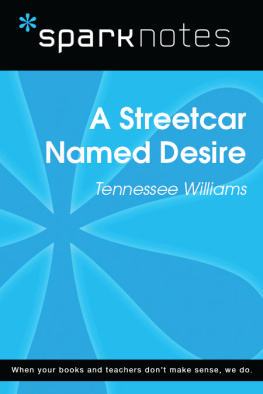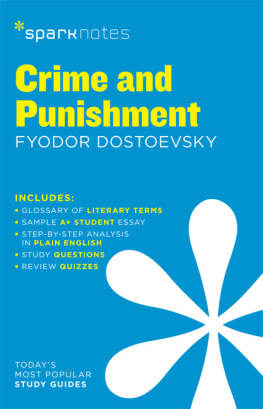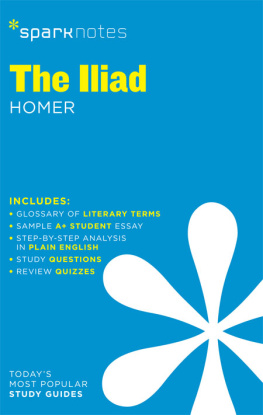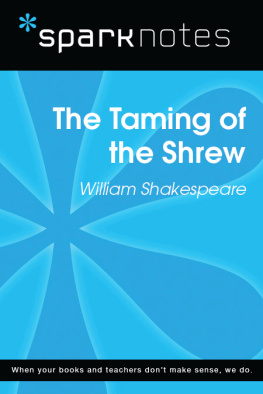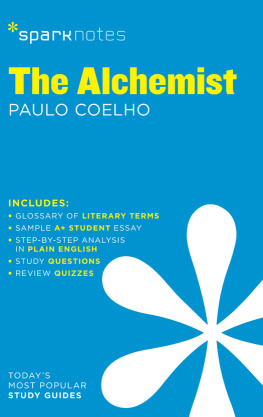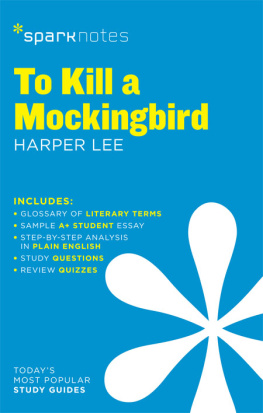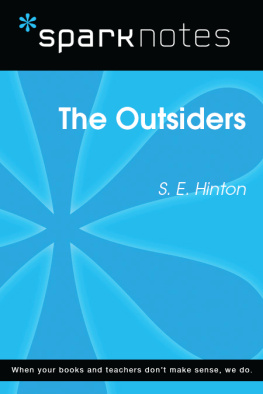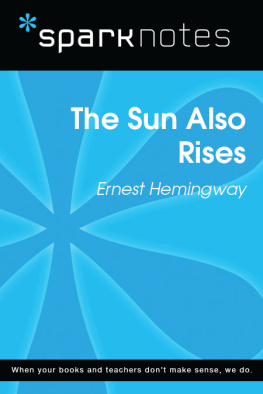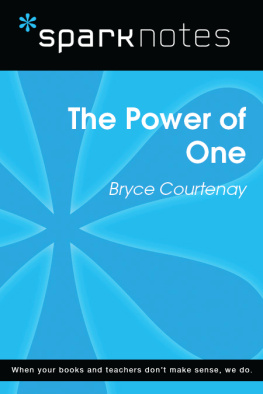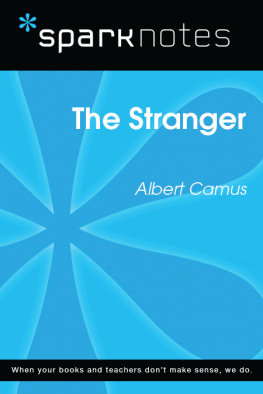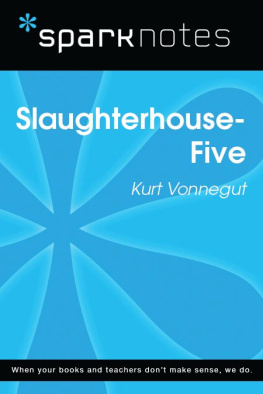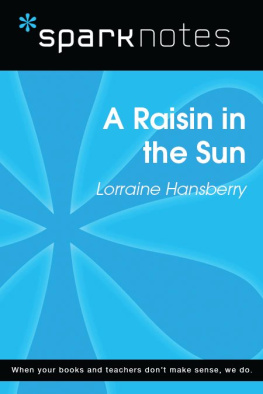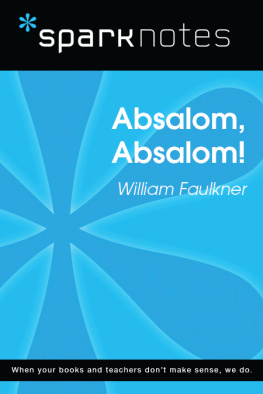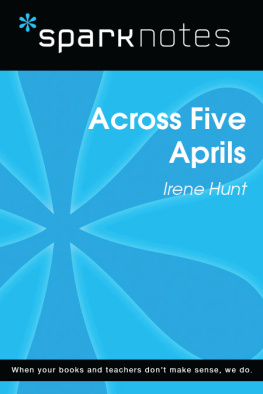A Streetcar Named Desire
Tennessee Williams
2003, 2007 by Spark Publishing
This Spark Publishing edition 2014 by SparkNotes LLC, an Affiliate of Barnes & Noble
All rights reserved. No part of this publication may be reproduced, stored in a retrieval system, or transmitted in any form or by any means (including electronic, mechanical, photocopying, recording, or otherwise) without prior written permission from the publisher.
Sparknotes is a registered trademark of SparkNotes LLC
Spark Publishing
A Division of Barnes & Noble
120 Fifth Avenue
New York, NY 10011
www.sparknotes.com /
ISBN-13: 978-1-4114-7779-7
Please submit changes or report errors to www.sparknotes.com/.
10 9 8 7 6 5 4 3 2 1
Context
T ennessee Williams was born Thomas Lanier Williams III in Columbus, Mississippi, in 1911 . His friends began calling him Tennessee in college, in honor of his Southern accent and his fathers home state. Williamss father, C.C. Williams, was a traveling salesman and a heavy drinker. Williamss mother, Edwina, was a Mississippi clergymans daughter prone to hysterical attacks. Until Williams was seven, he, his parents, his older sister, Rose, and his younger brother, Dakin, lived with Edwinas parents in Mississippi.
In 1918 , the Williams family moved to St. Louis, marking the start of the familys deterioration. C.C.s drinking increased, the family moved sixteen times in ten years, and the young Williams, always shy and fragile, was ostracized and taunted at school. During these years, he and Rose became extremely close. Edwina and Williamss maternal grandparents also offered the emotional support he required throughout his childhood. Williams loathed his father but grew to appreciate him somewhat after deciding in therapy as an adult that his father had given him his tough survival instinct.
After being bedridden for two years as a child due to severe illness, Williams grew into a withdrawn, effeminate adolescent whose chief solace was writing. At sixteen, Williams won a prize in a national competition that asked for essays answering the question Can a good wife be a good sport? His answer was published in Smart Set magazine. The following year, he published a horror story in a magazine called Weird Tales, and the year after that he entered the University of Missouri to study journalism. While in college, he wrote his first plays, which were influenced by members of the southern literary renaissance such as Robert Penn Warren, William Faulkner, Allen Tate, and Thomas Wolfe. Before Williams could receive his degree, however, his father forced him to withdraw from school. Outraged because Williams had failed a required ROTC program course, C.C. Williams made his son go to work at the same shoe company where he himself worked.
After three years at the shoe factory, Williams had a minor nervous breakdown. He then returned to college, this time at Washington University in St. Louis. While he was studying there, a St. Louis theater group produced two of his plays, The Fugitive Kind and Candles to the Sun. Further personal problems led Williams to drop out of Washington University and enroll in the University of Iowa. While he was in Iowa, Rose, who had begun suffering from mental illness later in life, underwent a prefrontal lobotomy (an intensive brain surgery). The event greatly upset Williams, and it left his sister institutionalized for the rest of her life. Despite this trauma, Williams finally managed to graduate in 1938 .
In the years following his graduation, Williams lived a bohemian life, working menial jobs and wandering from city to city. He continued to work on drama, however, receiving a Rockefeller grant and studying playwriting at the New School in New York. His literary influences were evolving to include the playwright Anton Chekhov and Williamss lifelong hero, the poet Hart Crane. He officially changed his name to Tennessee Williams upon the publication of his short story The Field of Blue Children in 1939 . During the early years of World War II , Williams worked in Hollywood as a scriptwriter and also prepared material for what would become The Glass Menagerie.
In 1944 , The Glass Menagerie opened in New York and won the prestigious New York Drama Critics Circle Award, catapulting Williams into the upper echelon of American playwrights. A Streetcar Named Desire premiered three years later at the Barrymore Theater in New York City. The play, set in contemporary times, describes the decline and fall of a fading Southern belle named Blanche DuBois. A Streetcar Named Desire cemented Williamss reputation, garnering another Drama Critics Circle Award and also a Pulitzer Prize. Williams went on to win another Drama Critics Circle Award and Pulitzer for Cat on a Hot Tin Roof in 1955 .
Much of the pathos found in Williamss drama was mined from the playwrights own life. Alcoholism, depression, thwarted desire, loneliness, and insanity were all part of Williamss world. His experience as a known homosexual in an era unfriendly to homosexuality also informed his work. Williamss most memorable characters, many of them female, contain recognizable elements of their author, Edwina, and Rose. His vulgar, irresponsible male characters, such as Stanley Kowalski, were likely modeled on Williamss own father and other males who tormented Williams during his childhood.
Williamss early plays also connected with the new American taste for realism that emerged following the Depression and World War II. The characters in A Streetcar Named Desire are trying to rebuild their lives in postwar America: Stanley and Mitch served in the military, while Blanche had affairs with young soldiers based near her home.
Williams set his plays in the South, but the compelling manner in which he rendered his themes made them universal, winning him an international audience and worldwide acclaim. However, most critics agree that the quality of Williamss work diminished as he grew older. He suffered a long period of depression following the death of his longtime partner, Frank Merlo, in 1963 . His popularity during these years also declined due to changed interests in the theater world. During the radical 1960 s and 1970 s, nostalgia no longer drew crowds, and Williamss explorations of sexual mores came across as tired and old-fashioned.
Williams died in 1983 when he choked on a medicine-bottle cap in an alcohol-related incident at the Elyse Hotel in New York City. He was one month short of his seventy-second birthday. In his long career he wrote twenty-five full-length plays (five made into movies), five screenplays, over seventy one-act plays, hundreds of short stories, two novels, poetry, and a memoir. The mark he left on the tradition of realism in American drama is indelible.
A Note on the Epigraph
The epigraph to A Streecar Named Desire is taken from a Hart Crane poem titled The Broken Tower. Crane was one of Williamss icons. Williamss use of this quotation is apt, as Crane himself often employed epigraphs from his own icons, including Melville, Whitman, Dickinson, and Blake. Williams felt a personal affinity with Crane, who, like himself, had a bitter relationship with his parents and suffered from bouts of violent alcoholism. Most important, Williams identified with Crane as a homosexual writer trying to find a means of self-expression in a heterosexual world. Unlike Williams, Crane succumbed to his demons, drowning himself in 1932 at the age of thirty-three.
Williams was influenced by Cranes imagery and by his unusual attention to metaphor. The epigraphs description of love as only an instant and as a force that precipitates each desperate choice brings to mind Williamss character Blanche DuBois. Cranes speakers line, I know not whither [loves voice is] hurled, also suggests Blanche. With increasing desperation, Blanche hurls her continually denied love out into the world, only to have that love revisit her in the form of suffering.

